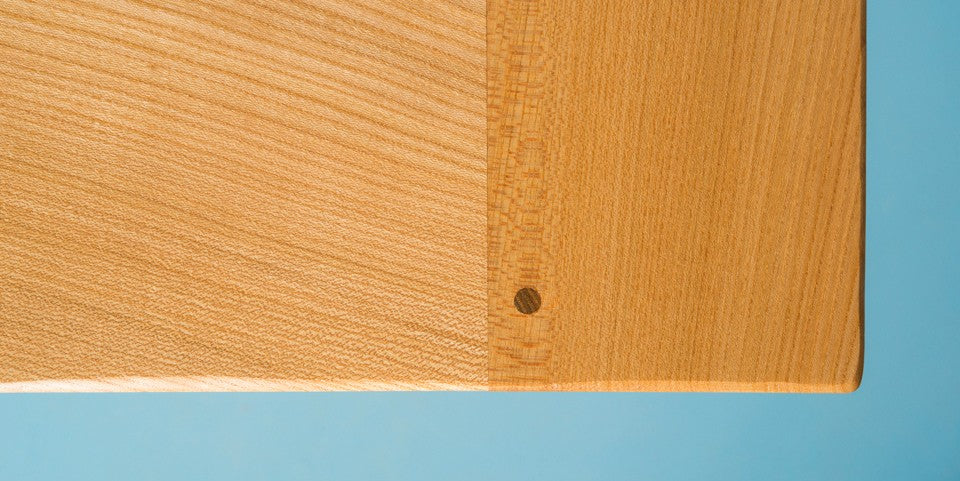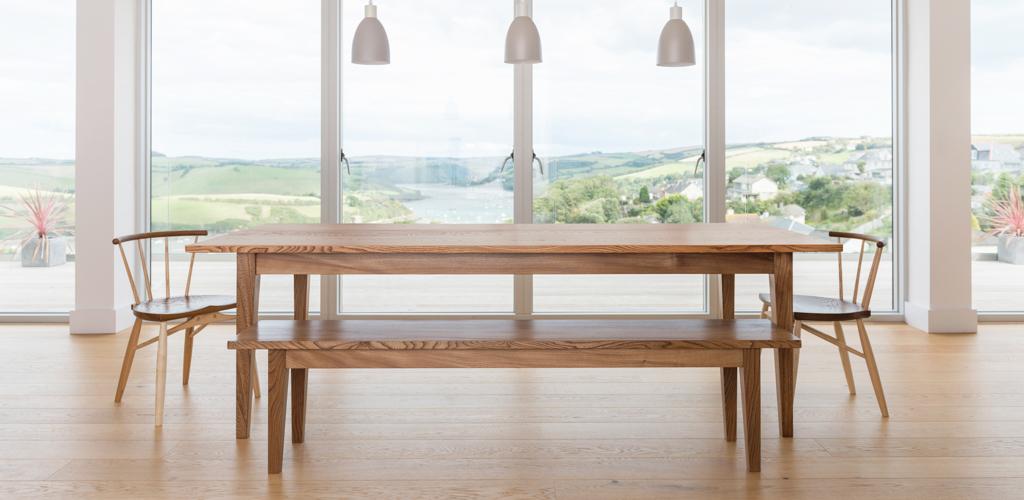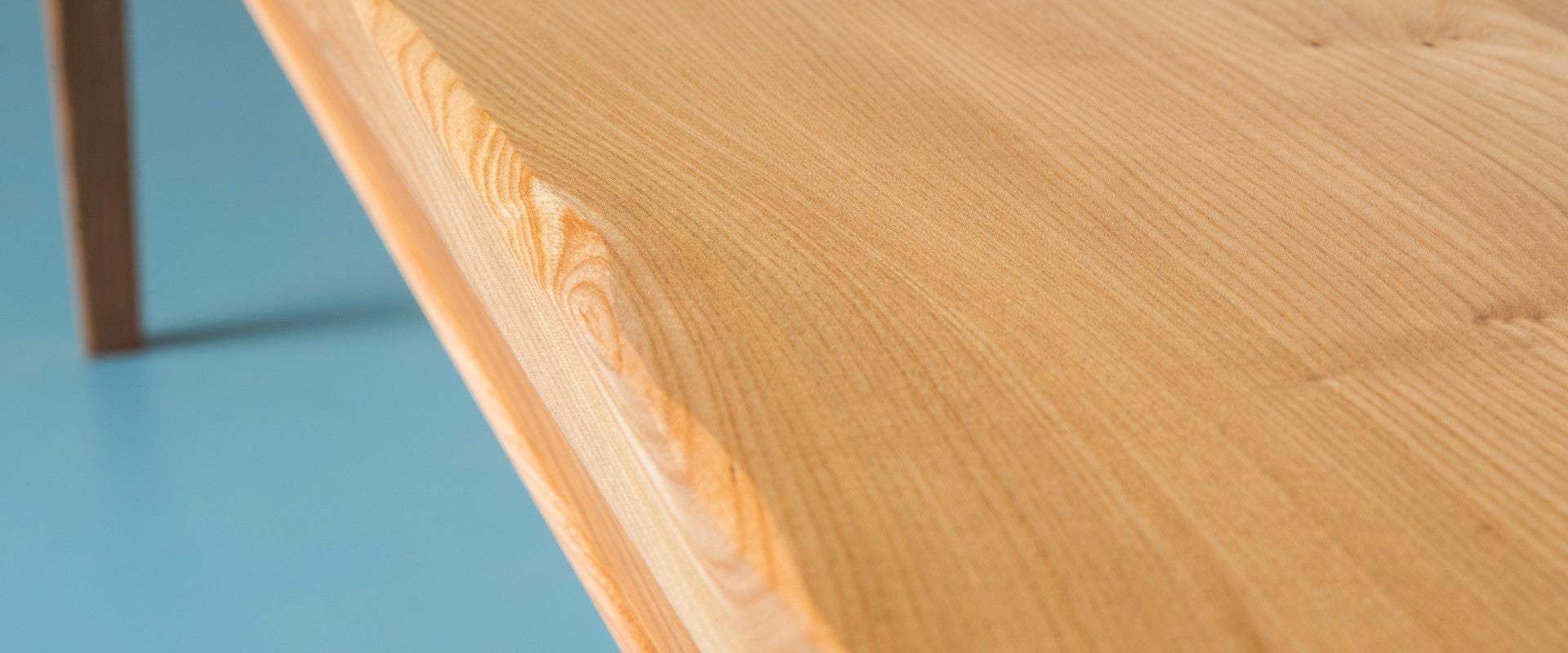What are breadboard ends
The breadboard end is a very traditional method in the craft of table making, which finishes the table top at both ends. It is a board in which the grain of the timber runs across the width of the table, as supposed to the boards that make up the main table top which run down the length of the table.
The joinery method
The breadboard ends are dry jointed (no glue) to each end of the table using tongue and groove joints which are pegged with dowels in order to fix them permanently to the table. This dry joinery method allows the width of the table top to continue to expand or contract dependant on its environment whilst the breadboard end stays fixed in place. This results in timber shrinkage or expansion being noticed because the width of the main section of table top usually shrinks, making it narrower than the length of the breadboard end which remains constant.
Timber behaviour
All timber however dry and stable, will react to its environment by either taking in, or losing moisture. This reaction will result in the shrinkage or expansion in this case of the width of the table top. Craftsmen have for centuries (as we also do), fixed the table top to the table base in a rather clever way which allows the table top to shrink or expand whilst staying flat and true to the base. On a table top without breadboard ends, this shrinkage or expansion will not be noticed.





Leave a comment
This site is protected by hCaptcha and the hCaptcha Privacy Policy and Terms of Service apply.